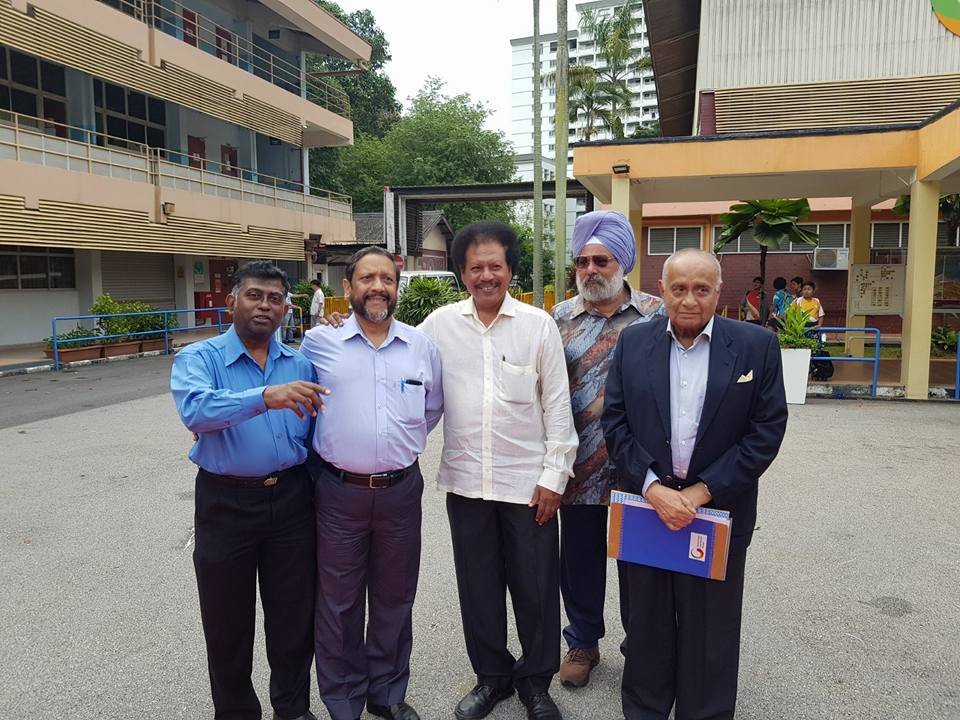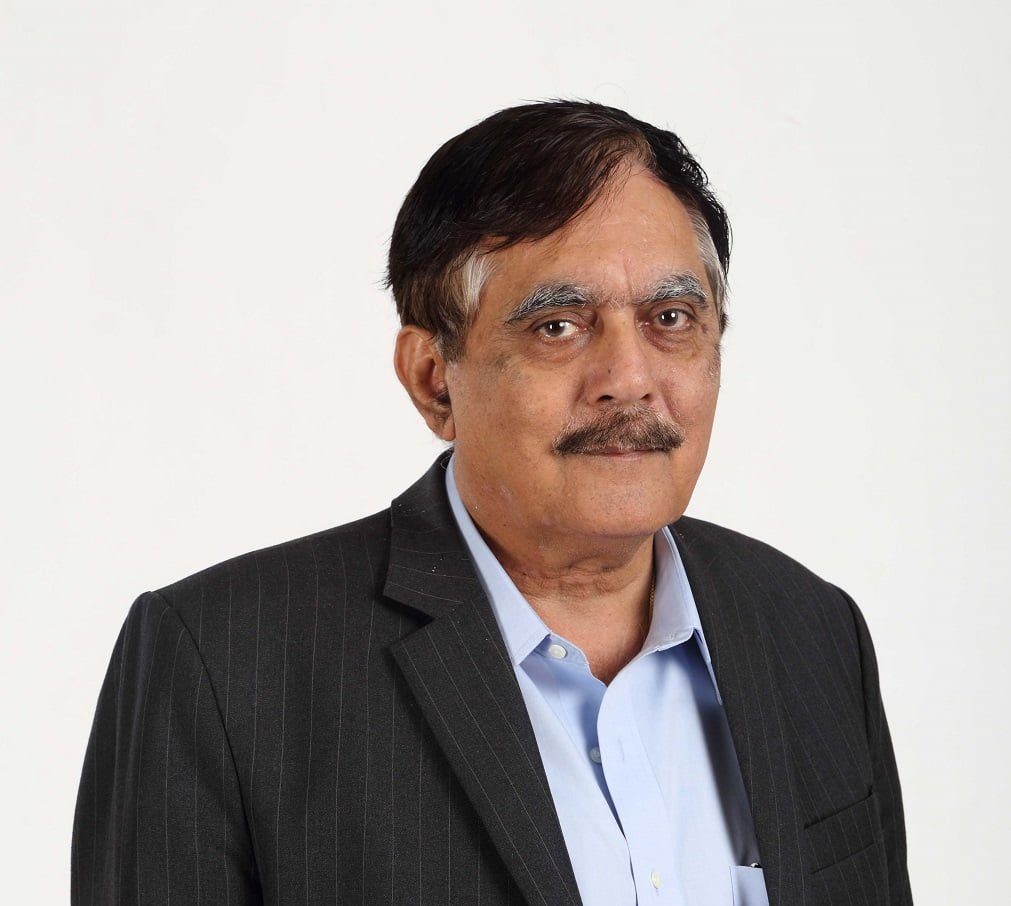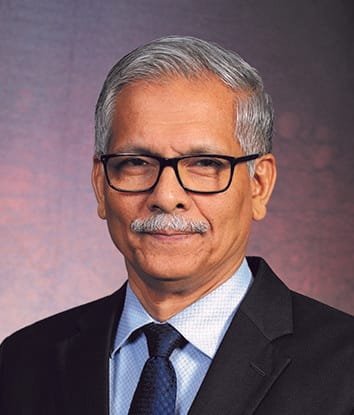The advisor to Foreign Investors on India died on 24 Nov 2020. Jumabhoy always shared with us his rich knowledge of businesses.
Ameerali R. Jumabhoy, a prominent Singaporean businessman and advisor to Foreign Investors on India (fiinews.com) passed away on Nov. 24, his family has announced. He was 94 and is survived by his four children, 11 grandchildren and one great-grandchild, the family said.
INDIAN INERTIA: SHAKE IT OFF, MOVE FORWARD
This freewheeling interview with Ameerali R. Jumabhoy was first published in a 2014 book put together by Gurdip Singh and Sameer C. Mohindru, What’s Up ! What’s Down ! Essays on India’s Socio-Economy. As the headline indicates, it is as relevant today as it was six years ago and is being exclusively reproduced in FII News.
We are reproducing it in memory of the stalwart.
“Our forefathers struggled immensely and gave their lives to win independence for us. The only way to repay their debt is to move forward and leave the country a better place to live in and for our kids to savor.” – Ameerali R. Jumabhoy
Ameerali R. Jumabhoy, a Singaporean of Indian decent, has experience in dealing with Indian businesses and local communities going as far back as 1940s, but he still has the same child-like enthusiasm for matters related to his country of origin as was the case 60 years ago. Ask Mr Jumabhoy about how it was like to do business in the early post-independence era and the 87-year old businessman, with a twinkle in his eye, will fork out anecdotes just like a wise man rubs his overflowing silvery beard.
Mr Jumabhoy’s illustrious career includes leadership roles in various institutions in Singapore. He has been active in International forums in Singapore and India, and has been a leading member of international trade delegations and missions. In March 1988, Mr Jumabhoy was in the high level delegation that accompanied Prime Minister Lee Kuan Yew on an official visit to India. In March 1992, he was Deputy Mission Leader with the then Deputy Prime Minister & Minister for Trade & Industry, Lee Hsien Loong. His national level work included drafting of the Singapore Employees Provident Fund which is now known as Central Provident Fund. Today, the Fund is the fountainhead for providing extensive coverage of housing, health and education to Singaporeans. Mr Jumabhoy’s views as expressed in the interview follow :-
Since times immemorial, India has enjoyed the status of a great country, notwithstanding the onslaught of invaders, one after another from the northwestern frontier. Till the end of the Moghul Empire in the 18th century, India enjoyed a strong socio-cultural and economic relationship with other Asian countries. India had multiple political kingdoms but from the socio-cultural point of view, India was a single nation. This is best illustrated by Jagad Guru Adi Shankaracharya setting up four seats of worship in four corners of the country. It shows that regardless of political divisions, common men, students, saints and businessmen were free to criss-cross the nation to pursue their interests. In fact, till the 1700s, world trade was dominated by India and China.
It was only the 190-year colonization that made India a poor nation with drain of resources
as explained in Dadabhai Naoroji’s book, ‘Poverty and Un-Britsh Rule in India’. However, this great nation with a rich past has now risen phoenix-like and is once again taking a pride of place in the comity of nations.
Today, India is again offering umpteen investment opportunities to other economies, but there are hurdles in achieving high economic growth. Unfortunately, most of these barriers are of India’s own making, albeit political and bureaucratic stumbling blocks which has resulted in a worrisome inertia.
Prime Minister Rajiv Gandhi brought a vast change in India’s economic landscape and set the pace for growth. Policies of Mr Gandhi’s government helped India shed the Hindu rate of 3.5% economic growth. During his premiership between 1984 and 1989, he started dismantling the “License Raj”, a process that was accelerated in 1991 but is yet to be concluded.
The policy changes initiated by Mr Gandhi has set the pace of brisk economic growth in the country and changed the attitude of foreigners towards Indian businesses and growth prospects. He introduced computers in a big way at a time when unlike the present, most people hadn’t even
heard of this revolutionary device. When employees of banks and railways protested, he tried to convince them about the inevitability of the computer age just as the industrial revolution of the previous generations. He pointed out to them that fears of unemployment due to computers are misplaced and this gadget will unleash new job opportunities. Even a computer needs a human being to operate! On the hindsight, it was a step in the right direction. Life without computers is now unimaginable.
The Indian industries started to expand from the 1980s onwards. Supporting the growth of these industries were institutions such as Confederation of Indian Industry (CII), Federation of Indian Chambers of Commerce and Industries (FICCI) and Associated Chambers of Commerce and Industry of India. CII and FICCI have helped create a pro-business environment in the country.
The potential of the Indian economy is such that if a few bureaucratic restrictions are removed, the inertia will go away and the annual Gross Domestic Product (GDP) growth will rebound to anywhere between 7 per cent and 8 per cent per year. But there seems to be a continuing
pernicious nexus between politicians and the bureaucracy. This nexus has made the commerce and trade environment very rigid. India’s exports are delayed due to port bottlenecks and crumbling infrastructure.
Indian bureaucracy became very powerful when Rajiv’s mother, the Late Prime Minister Indira Gandhi, nationalized major businesses in the country. Indira Gandhi was Prime Minister for almost 16 years and the impact of her policies, for good or for bad, is still felt in the Indian economy.
I evacuated from Singapore during the Pacific War, which is known for the Japanese occupation of Singapore in the early 1940s. This gave me a chance to graduate from the Bombay University. The lessons I learnt during the time spent in the university are still keeping me in good stead. I continue to have strong family, cultural and business links with India and feel strongly for its progress. I can say from experience both in India and Singapore that for a country’s economy to be successful, it needs to have a single window clearing system for investors. While, India claims to have it in theory, it is missing in practice. Many big-ticket multi-billion dollar infrastructural
projects are stuck in red-tape including delays in clearances by the environmental ministry and the states.
Businesses should get one-stop clearance to implement projects, of course on merit and under Indian laws. This will help investors tap the potential of the Indian market, increase manufacturing growth and as a logical corollary the exports of Indian goods will also increase.
This is not to be against social security and economic activities should continue unhindered. We worked tirelessly to get a series of legislation passed including those related to employment fund, a post-retirement security valve for workers in Singapore.
There is no dearth of intelligence, ability or capital in India. The cost of manufacturing in terms of Indian currency is still low. Consequently, Indian businesses have a competitive edge across the globe. They don’t need heavy loans from financial institutions and banks. In the previous two decades, India has managed to continue its economic progress without taking any aid from the International Monetary Fund.
Several times, we have requested Indian ministers visiting Singapore to have a look at the city-state’s system of clearing economic projects and investment proposals which is corruption-free, time-bound, growth oriented and strictly based on merit without any wheeling and dealing.
There is corruption in China, just like it is in India. There is no doubt about it. But the Chinese authorities and leaders at least have the strong will and drive to achieve their targets of economic growth. Expansion of industries is backed by a strong national agenda, which is drafted by the Central Government in Beijing. The Chinese government drives a hard bargain both with the investors and the public whose land is to be cleared for economic projects. The government has a strong pro-business attitude.
India needs to eradicate the virus of corruption but at the same time draw lessons from the element of decisiveness that we see in the Chinese policy makers. In stark contrast, Indian administrators are often helpless or hapless. To be fair, they face a challenge of managing two administrative systems – Centre and the States.
These two strata of laws and regulations can often be frustrating for economists and the investors – both domestic and foreign. Let me caution the Indian government that the foreigners with investment plans for the country will opt to stay out till the business environment improves. India’s 29 states have yet to form a consensus to have a uniform Goods and Services Tax, or value added tax. Due to a plethora of taxes and laws, businessmen have to do a costly and complicated analysis on excel sheets to choose a state as their investment destination.
Projects, which can be done in 18-24 months in the developed economies, are taking years to complete in India; this dramatically changes the economics from when the investment was first envisaged or was on the drawing board stage.
It is sad to see a country to which we trace our roots and an economy with a huge consumer and industrial market to have slowed down to 5 per cent annual economic growth for 2012-2013 compared with a potential of 11 per cent to 12 per cent. We are nostalgic of yesteryears when India clocked higher economic growth. It was as high as 11 percent in 2010-11; the average of the full previous decade was 8 percent.
The time has come for India to shake off its inertia and move forward again. fiinews.com










